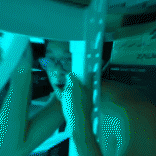Parallel Loop Theory
Go to solution
Solved by SquintyG33Rs,
2 minutes ago, Napalm360 said:To quote Barnacules Nedrgasm, If you give someone Factual Points and even give a way to personally verify said point then education has has failed you
yeah. but psychology also taught us that in a position of equals it is near impossible to convince somebody of their mistake because of confirmation bias and every attempt to prove them wrong will only reinforce their convictions because we seem desperate to bring them to our side instead of just agreeing with them... humans are so dumb sometimes i swear.


















Create an account or sign in to comment
You need to be a member in order to leave a comment
Create an account
Sign up for a new account in our community. It's easy!
Register a new accountSign in
Already have an account? Sign in here.
Sign In Now